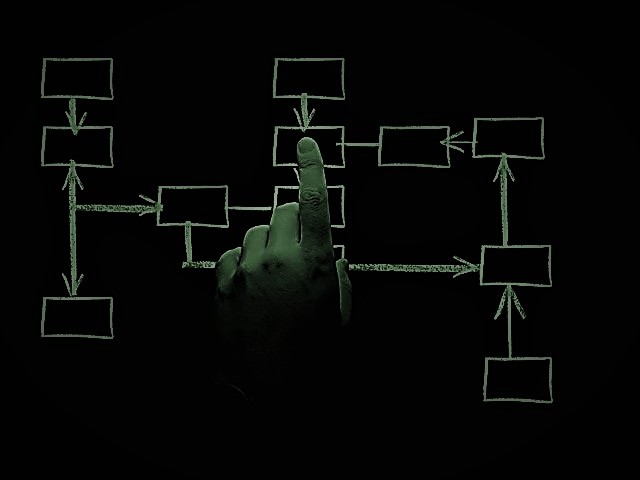15 Tips To Streamline Your Business And Become Profitable
Table of Contents
Bear in mind that some of the links in this post are affiliate links and we may earn money or products from the companies mentioned in this post. You won't pay any additional costs. The decision is yours, and whether or not you decide to buy something is completely up to you..
Here are 15 Tips To Streamline Your Business And Become Profitable. These tips will help you ‘cut the fat’ and improve the productivity of your business. If you apply a few of these, you’re well on your way to achieving greater profit and creating less stress!
1. Cut the Slackers
“Carrying dead-weight employees? Lose them now!” Ever tried to run a marathon whilst towing an old tire? This is what it’s like trying to grow a productive business with unproductive (or unmotivated) employees. Not only will they not add value to your bottom line, they’ll drag other ‘productive’ workmates to their level. Cutting a slack worker (legally of course) will actually increase the productiveness of other workmates. With that being said I’m a true believer in making sure we are positioning employees in a position to succeed. As a leader it our job to learn what motivates our teams and to develop our teams for growth.
2. Cut the Paper
“Start a movement against paper!” Do you need to print that email to read it? Or that brief? Reduce office clutter on desks and encourage better use of digital filing. Ask clients to email files rather than send faxes, and printed media. Instruct vendors to provide electronic invoices, in certain cases you might be able to short pay a vendor for having to handle paper. Use a web based project management, such as Wrike or time tracking solution rather than paper based time sheets. Get the drift – saves trees too!
3. Cut the Time
“A task can take both 10 minutes and an hour!” Have you noticed that if you give a task (i.e.: write a proposal) to an employee and they have a day to do it, they will, but if you give them 3 days to do the same task, guess what, they’ll take 3 days! Put tight and exact deadlines (i.e.: Wed 3:30 PM) on important tasks, and your staff will become more productive. There are a couple concepts I’d like to mention here…productive vs. busy and responsible vs. accountable.
If you ask anyone they will tell you they are busy and point-out all the tasks they are working on, or planning to work on. The fact is we need teams to be productive, not busy. One of the best ways to implement this mentality is to change the focus of meetings on productivity (what did you accomplish, not what you are working on).
We also want teams to be responsible for accomplishing tasks, not having the conversation about accountability when a deadline is missed. Responsibility is a much more positive approach than be accountable.
4. Cut the Expenses
“Plug all the holes in your cash flow!” Make a list of all general expenses in your business. Next to each one, write one of the following: Need it, Review it, Cut it. Work down the list firstly on the expenses to ‘Cut’. This will create immediate savings. Then have them ‘Review’ the expenses you need, but perhaps could get a better deal on. ‘Trimming the fat’ every 6 months can help you create profit. In some cases you have options for vendors, so make sure you are negotiating the best rates/contracts and lead times.
By itself cost-cutting is not a sustainable path to long-term growth. Forward looking companies use cost cutting to further align their costs with their business strategies. Strategic cost cutting helps lower the cost structure, but it’s not about getting cheaper. Instead, strategic cost cutting helps ensure an organization is ready for growth. It focuses on the aspects of the business that are controllable while freeing up resources to fund opportunities and future growth.
5. Target Different Work
“One project for $20,000 or ten projects for $2,000 each”. Look at the type of work you’re targeting. Is it worth targeting a different type or value of work? Most businesses just ‘do what they’ve always done’ rather than looking for more profitable types of revenue. Think hard about other more profitable work your business can do with its available resources. Be expanding to the online space you can create more of a passive income stream.
6. Don’t Work Late, Come in Early
“A clear mind is a productive mind!” Outside of work, this time should be used to recharge. Don’t take extra work home, rather just go home, relax, play golf, go for a run, enjoy the family & come in early to do that extra work. Not only will you work better after relaxing, but your family life will improve! I’m personally a morning person and I always work on the most difficult tasks first thing, as I find I’m more focused.
7. Motivate Staff, Offer Incentives
“Staff priorities are not the same as manager priorities!” Managers, Owners & Directors have different motives and priorities than staff. Just because you are excited about your business doesn’t mean the staff always feels the same way. As a business owner or executive your mind is on the bottom line, strategy of the business, business growth, etc. I personally have found motivating team members with “benefits’ such as leaving early and other flexibility has more of an impact than more money.
8. Hire multi-skilled workers
“Enlarge your skill base without the cost!” It’s better to have two designer/developers, than a designer and a developer. Multi-skilled workers, by nature are generally better problem solvers, more flexible and more productive than single skilled workers. You’ll also have more options for work delegation and due to an increased skill base will be able to take on a wider range of projects.
9. Clean your Desks
“Start the Week Fresh”. Make it company policy that every Friday, before staff leave, all loose paper is to be filed away or organized in racks, drawers, folders or cabinets. A messy work space is a messy mind. By having staff organize their desks on Friday, when they start on Monday, they’ll get straight info focused work, rather than looking at clutter wondering where to start. More productive time!
10. Small Business Enterprise Resource Planning (ERP)
Enterprise Resource Planning (ERP) has been known to be the backbone for many businesses. The software is critical tool for managing production, order processing, inventory, accounts receivable, accounts payable, shipping, etc.
There haven’t been as many suitable ERP options available to small-sized businesses in the past. These businesses simply didn’t have the funds or technical support to create the infrastructure necessary to adopt the traditional corporate-scale ERP solutions.
Therefore, growing businesses end up creating a fragmented business structure made up of several separate programs that handle finance, inventory, sales, payroll and more. However, recent technological advancements have opened the door to more practical small business solutions.
Top ERP Systems for Small Business
11. Prioritize Your 20%’ers
“Do the important things first!” Most people procrastinate on the 20% of the tasks that create 80% of the revenue. At the end of each day, make a list for the next day. If you have 25 tasks, list the 5 most important revenue generating tasks (the 20%’ers), then list the 5 most urgent tasks. By working through the 20% items first, you’re working ‘on’ the business (growth), rather than ‘in’ the business (maintenance).
I’m a huge fan of the Eisenhower Quadrant.
How to be More Productive and Eliminate Time Wasting Activities by Using the “Eisenhower Box”
12. Review your Service Providers
“Your services should be team players, not just expenses!” Do you consider your accountant or lawyers an expense? Or do they truly add value? A good accountant will save you more money than they cost. With so many accountants, lawyers, printers, couriers etc available, are you sure you are working with the best you could be? Every 6 months you should review your external services with this question in mind: “Are they helping or hindering my business?”
With that being said I a believer in paying more money for the right service where I can build a relationship with the provider. When you can build a relationship they’ll understand your business and your needs.
13. Systemize your Processes
“How can I do it easier, faster, and cheaper?” As a matter of habit, always look for ways to systemize processes. Create templated emails, templated forms and documents, a ‘roles and responsibilities’ chart, use process automation applications, digital timesheets, auto responders, automatic payments etc. Almost every process in your business can be creatively systemized to be easier, faster, and cheaper! If you systemize 3 processes a month, that’s 36 processes a year – what a difference!
14. Use Remote Workers
“Only pay for what you use!” Every staff member not only costs a salary, but also a chair, a desk, a computer, power, square footage, coffee in the kitchen, benefits, etc. By using remote workers and contractors, you’ll save money and maybe not even need a huge office. They’ll even pay for their own coffee!
15. Learn to Delegate
“Work on your business, not in it!” If you are a manager, you should be spending at least 80% of your time working on growing, building systems, trimming, and strategic planning. Are you spending too much time on menial tasks or work that can be delegated? If so, learn to delegate (or use contractors) as this will free your time to concentrate on the big picture – “Growing your business and making it profitable!”








